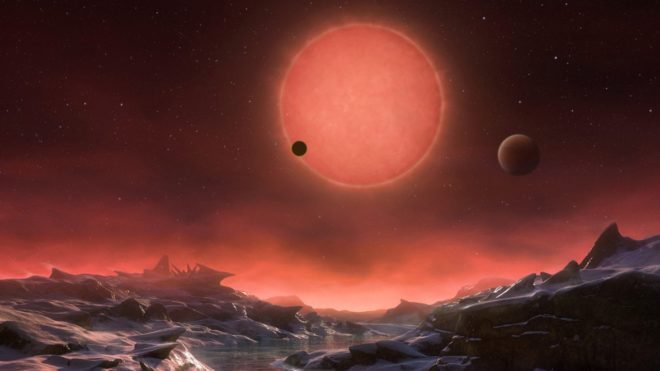
Oct. 2, 2017
Research Highlight
Habitability in the TRAPPIST-1 System

This artist’s impression shows an imagined view from the surface one a planet orbiting an ultracool dwarf star just 40 light-years from Earth. Planets in this system were discovered using the TRAPPIST telescope at ESO’s La Silla Observatory.Image credit: ESO/M. Kornmesser.
Using a 3D climate model, scientists have studied the possible climate and habitability of terrestrial extrasolar planets identified in the TRAPPIST-1 system. The results of the study, using the National Center for Atmospheric Research Community Atmosphere Model version 4, indicate that planets b, c, and d (the inner three planets in the system) sit at the inner edge of the traditional habitable zone. If liquid water existed on the surface of these planets, they could have lost that water to space through a runaway greenhouse. The outer three planets (f, g, and h) sit toward the outer edge of the habitable zone, and results indicate that they could have entered a snowball state. The findings point to the middle planet (e) as the best candidate for a habitable, ocean-covered world in the system.
The study was performed under the assumption that the worlds were ocean-covered at one time and had atmospheres composed of N2, CO2, and H2O.
The paper, “Assessing the Habitability of the TRAPPIST-1 System Using a 3D Climate Model,” was published in The Astrophysical Journal Letters. The work was supported through NASA’s Habitable Worlds Program. NASA Astrobiology provides resources for this and other Research and Analysis programs within the NASA Science Mission Directorate (SMD) that solicit proposals relevant to astrobiology research.